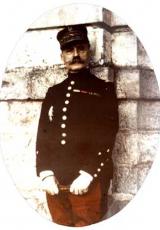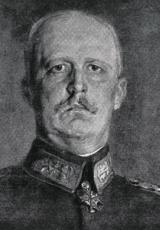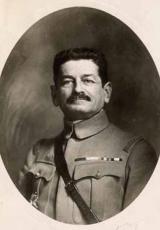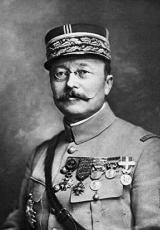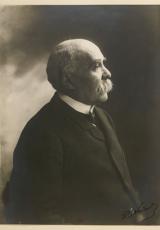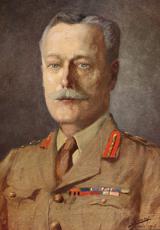Foch lance la contre offensive francaise
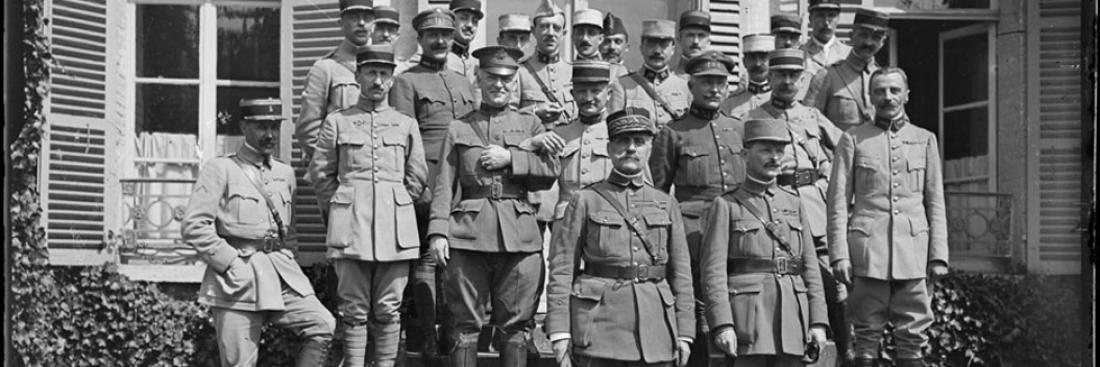
Corps 1
Foch launches the French counter offensive With the divisions brought back from the Russian front at his disposal, Ludendorff launched violent attacks from Flanders to the Champagne region in the spring of 1918, gouging several enormous holes in the front. Following on from the June offensive on the Chemin des Dames, which became the Château-Thierry salient, he started an operation in the Champagne region that, followed by a new attack in Flanders, was to precede the great push "nach Paris". This offensive, called "Friedensturm" or peace attack, was supposed to secure a decisive victory. But the attack, launched on the 15th of July, was blocked by a formidable offensive organised by General Foch that was to mark the end of German hopes. The second victory of the Marne In the Champagne region, French troops, given an audacious helping hand with information, had created a void in front of the enemy and withdrawn the previous day to a defensive position. This shrewd manoeuvre and the fortunate measures taken by the chief of the 4th army, General Gouraud, were to surprise the enemy, blocking their advance. Despite some success to the west of Reims, the German offensive came to a standstill and on the night of the 17th Ludendorff left for Tournai. The Battle of Champagne was to be a defensive success for Pétain and Gouraud.
Corps 2
Foch wanted to take advantage of the German Champagne offensive to hit the enemy in its flanks and back. On the 12th of July, instructions were given for an attack that would take place on the 18th of July. During the night of the 17th, aided by violent storms, the troops of Mangin and Degoutte got into position behind the units in line. Assembled in the Villers-Cotterêts forest on the western side of the pocket, the 10th army (Mangin), 6th army (Degoutte) and an American corps, totalling 16 divisions, including 3 divisions of American infantry, set out in force at 4.35 am on the 18th of July without any artillery preparation, but preceded by a 2,500 piece rolling barrage and supported by 800 aircraft and 350 tanks. On this sunny July morning, with long swirls of fog still floating about, the assault waves advanced through the already high cornfields. Opposite them were General von Einem's 9th and General von Boëhm's 7th armies, who bore the brunt of the attack.
Around 9 am, the whole of the German front line was annihilated. The air force, present in great numbers, signalled the general advance. However, German resistance intensified with the arrival of reinforcements and the advance slowed down. Towards the middle of the day there was a lull, but fierce fighting started again in the afternoon and carried on into the night. The 10th army broke through that same evening, advancing 8 kilometres and capturing 10,000 prisoners. Ludendorff had to withdraw to the Aisne.
On the second day of the battle, the offensive resumed from 4.45 am onwards. German resistance became stronger, but the advance continued. After two days of relentless fighting, the Germans had retreated 10 kilometres and the front between the Aisne and the Oise extended from Soissons to Château-Thierry, which were still occupied by the enemy. The vital railway hub of the 7th German army (the Fère-en-Tardenois-Crouy line) was under fire from allied cannons when the air force signalled that the enemy's armies were preparing for withdrawal. This was a magnificent result, which gave the Allies hope and dealt a bitter blow to German morale. From the 20th of July, the 9th and 10th armies entered into battle and it became difficult to differentiate between the Tardenois, Soissons, Ourcq and Marne offensive operations.
On the 2nd of August, Mangin's troops arrived in Soissons; on the 3rd, they were along the Vesle, after having absorbed the Château-Thierry pocket.
Victory was important. Tactically, the pocket of the 27th of May was retaken. Strategically, Ludendorff had to abandon his attack on the British in Flanders. The result on morale was enormous: "You have given France a sense of victory; your country can be proud of you" General Mangin was to tell his troops. This victory was the logical culmination of Foch's plans, of the single command and the shared aim of the Allies, who would now have the advantage up until the armistice. On the 6th of August, Clemenceau suggested to the President of the Republic that he should make General Foch, whose energy and shrewd calculating had now been crowned with victory, Marshall of France. The decree of the 7th of August, which officially appointed him mentions the results achieved in this second victory of the Marne: "Paris freed, Soissons and Château-Thierry reconquered in the height of battle, more than 200 villages liberated, 35,000 German prisoners, 700 German cannons and 3,300 German machine guns seized, the enemy's highly proclaimed hopes before its attack dashed and the glorious allied armies propelled in one victorious leap from the banks of the Marne to the shores of the Aisne - these are the results of an operation that was as admirably conceived by the French High Command as it was superbly executed by our superlative chiefs and soldiers."
The 8th of August 1918: the Battle of Picardy The offensive to liberate the Paris-Amiens railway line, planned by Foch since April, was decided upon at the end of July at Sarcus, where he had set up his new head quarters.
Marshall Haig was to take command of the group of armies comprising the 4th British Army (General Rawlinson) and the 1st French Army (General Debeney). It was a particularly well-kept secret, as even the heads of government were not aware of this offensive, definitively set for the 8th of August.
At 4.20 am and without any artillery preparation, Rawlinson's army attacked along an 18 kilometre front between the Somme and the road from Amiens to Roye. The infantrymen were preceded by tanks, hidden by the fog and smoke from smoke shells. The advance was rapid and had completed 9 kilometres by the end of the day: 13,000 prisoners were captured. During this time, Debeney's army was to attack along a 7-kilometre front to the south of the road from Amiens to Roye, as far as Moreuil.
Artillery preparation began at 4.20 am and the attack was launched at 5.05 am by the 31st corps, which captured the town and the woods of Moreuil at 7.30 am. In turn, at 9 am the 9th corps attacked to the south of Moreuil across the Avre, but their advance was blocked. However, the advance of the 31st corps allowed them to achieve their set objectives by the end of the day, as did all the other units. On the 9th, the attack became more widespread and the Allies attacked to the north of the Somme and to the south of Montdidier. At 4 pm the 35th corps set out to attack and took Assainvilliers and Faverolles. Montdidier, thus captured in a pincer movement, was evacuated during the night by the Germans and occupied by allied troops on the morning of the 10th.
In two days, the Allies captured 24,000 prisoners and 300 cannons. But most importantly, the morale of the German troops was hit and their enthusiasm for battle was never the same. Later, Ludendorff was to write in his memoirs: "The 8th of August was the day of mourning for the German army in the history of this war". Ludendorff and Foch's strategic ideas were similar: seeking victory through successive violent attacks in various places along the front. But whereas, intoxicated by his successes, Ludendorff lost some of his clear sightedness by deviating from his initial campaign plan (attacking the Franco-British front in Flanders) to pursue his advance through the Aisne, Foch, on the other hand, knew to keep his eyes fixed on one sole objective, distant, perhaps, but from which neither isolated successes nor the anguish of defeat could distract him.


